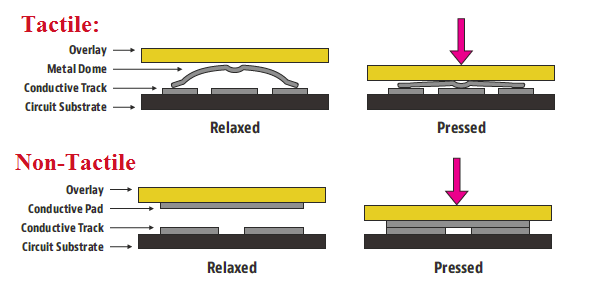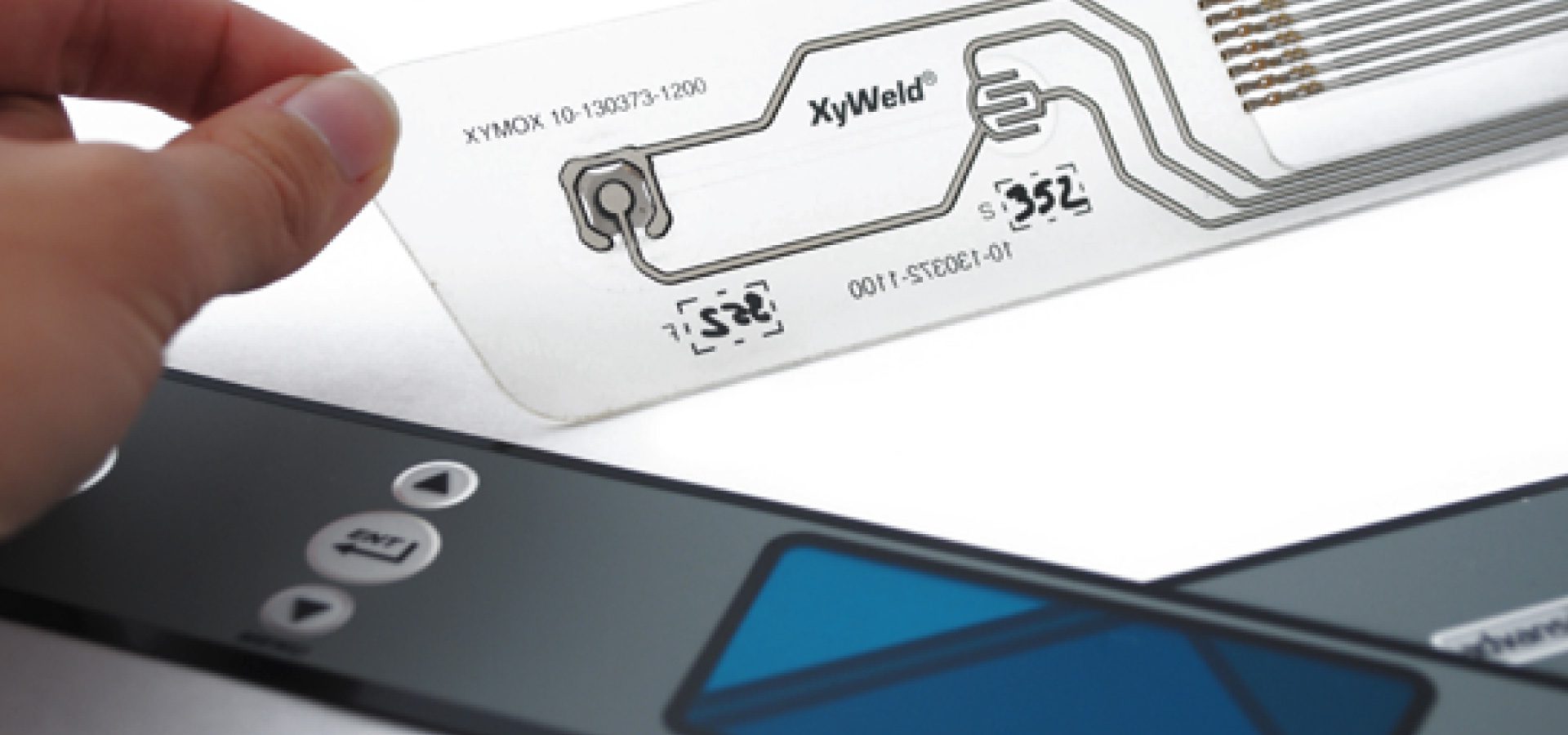Discover How Membrane Switches Function and Their Function in Modern Electronic Devices
Membrane Switches represent a sophisticated integration of innovation and design within the world of modern-day electronics, functioning as necessary interfaces in countless gadgets. Made up of numerous layers, these buttons utilize pressure-sensitive systems to help with customer interaction. Their applications span various markets, from customer electronic devices to clinical equipment, highlighting their convenience and relevance. Recognizing the complexities of Membrane button functionality and their broader ramifications in improving customer experience invites additional exploration right into their style, benefits, and the cutting-edge growths shaping their future in technology.
What Are Membrane Buttons?

Membrane switches are identified by their sturdiness and resistance to ecological variables, such as dirt, moisture, and extreme temperatures. They can be personalized with numerous graphics, shades, and responsive feedback options, improving individual experience while keeping visual allure - membrane switches. Moreover, the incorporation of printed circuits permits smooth combination right into tools, enhancing general functionality.
The flexibility of Membrane buttons is obvious in their capability to support both complex and easy control functions. They can integrate features such as LED indications and touch-sensitive modern technology, accommodating particular customer demands. As modern technology remains to advance, Membrane Switches remain vital for enabling intuitive and efficient individual interfaces, consequently playing a pivotal duty in the improvement of modern electronic devices.
Elements of Membrane Switches
Membrane switches are composed of a number of crucial components that collaborate to develop a practical and trusted interface. The key components consist of the visuals overlay, glue layer, spacer layer, and conductive traces.
The graphic overlay works as the user interface, normally published on an adaptable substrate such as polyester or polycarbonate. This layer not only provides visual allure but likewise consists of tactile comments, aesthetic cues, and safety functions. Beneath the graphic overlay lies the adhesive layer, which protects the switch to the tool and makes sure longevity versus environmental tensions.
The spacer layer is crucial for maintaining the required gap in between the visuals overlay and the circuit layer. This gap permits the activation of the switch when pressure is used. The conductive traces, usually made from silver or carbon, create the electrical pathways that complete the circuit when the switch is engaged.
Furthermore, a support layer might be consisted of for structural support and insulation. These parts collaborate flawlessly, making sure that Membrane switches are both easy to use and resilient, making them essential in numerous modern-day electronic applications.
Exactly How Membrane Switches Job
Exactly how do Membrane Switches feature effectively within digital devices? Membrane Switches run on the concepts of pressure-sensitive modern technology, utilizing a split construction that includes graphic overlays, adhesive layers, and conductive components.
The layout of Membrane buttons is crucial for their reliable operation (membrane switches). The layers are carefully engineered to supply responsive feedback, durability, and resistance to environmental elements such as dampness and dirt. The incorporation of domes-- small, raised areas within the switch-- enhances tactile action, offering customers with a noticeable click sensation upon activation
In addition, Membrane buttons can be customized in regards to dimension, shape, and graphics, making them ideal for different applications. They are commonly made use of in control panels, clinical gadgets, and customer electronics because of their sleek design and reliability. In general, the efficient functioning of Membrane buttons is pivotal in improving customer communication and ensuring smooth procedure in modern digital gadgets.

Applications in Modern Instruments
Using their one-of-a-kind layout and capability, Membrane buttons have actually ended up being essential parts in a variety of modern-day digital gadgets. These flexible interfaces are used in consumer electronics, industrial equipment, medical gadgets, and automobile controls, providing smooth individual communication.
In consumer electronics, Membrane switches are generally located in appliances like microwaves, cleaning equipments, and various other household gadgets, where they allow intuitive control with a smooth account. Their low-profile style helps with combination into portable gadgets, enhancing aesthetic allure without endangering performance.
In industrial applications, Membrane Switches function as control panels for machinery, using sturdiness and resistance to severe atmospheres. Their capacity to endure wetness and contaminants makes them optimal for use in manufacturing and processing industries.
Clinical devices also take advantage of Membrane buttons, which are designed to be simple to clean and maintain, making read the article sure health in scientific settings. They are commonly used in analysis equipment, client surveillance systems, and mobile medical devices, where integrity is vital.
Advantages of Membrane Buttons
One of the key benefits of Membrane buttons is their flexibility, which allows them to be tailored for a variety of applications throughout numerous industries. These buttons can be made in various sizes and shapes, suiting navigate to this website special product requirements while offering smooth integration into gadgets. Their slim account allows a streamlined and compact design, commonly boosting the aesthetic charm of digital products.
An additional substantial benefit is their resilience - membrane switches. Membrane buttons are normally immune to dust, moisture, and chemicals, making them excellent for extreme settings. This resilience prolongs their life expectancy compared to typical mechanical buttons, minimizing the demand for regular substitutes
Additionally, Membrane Switches offer cost-effectiveness. The production procedure involves printing modern technologies that decrease production costs, especially for huge runs. This cost, combined with low maintenance needs, makes them an eye-catching alternative for suppliers.

Final Thought
In final thought, Membrane Switches stand for a substantial improvement in user interface innovation within contemporary electronics. As the demand for intuitive and resistant user interfaces continues to expand, the duty of Membrane switches in shaping customer experience will most certainly expand.
Membrane Switches represent an advanced assimilation of modern technology and layout within the world of modern electronic devices, offering as essential user interfaces in various devices.In the realm of contemporary electronics, Membrane Switches serve as critical elements that facilitate individual interaction with devices. As technology proceeds to develop, Membrane Switches remain necessary for making it possible for user-friendly and reliable individual interfaces, thereby playing an essential duty in the development of contemporary digital devices.
How do Membrane Switches function successfully within electronic gadgets? On the whole, the effective functioning of Membrane switches is essential in boosting user interaction and ensuring seamless operation in modern-day digital gadgets.